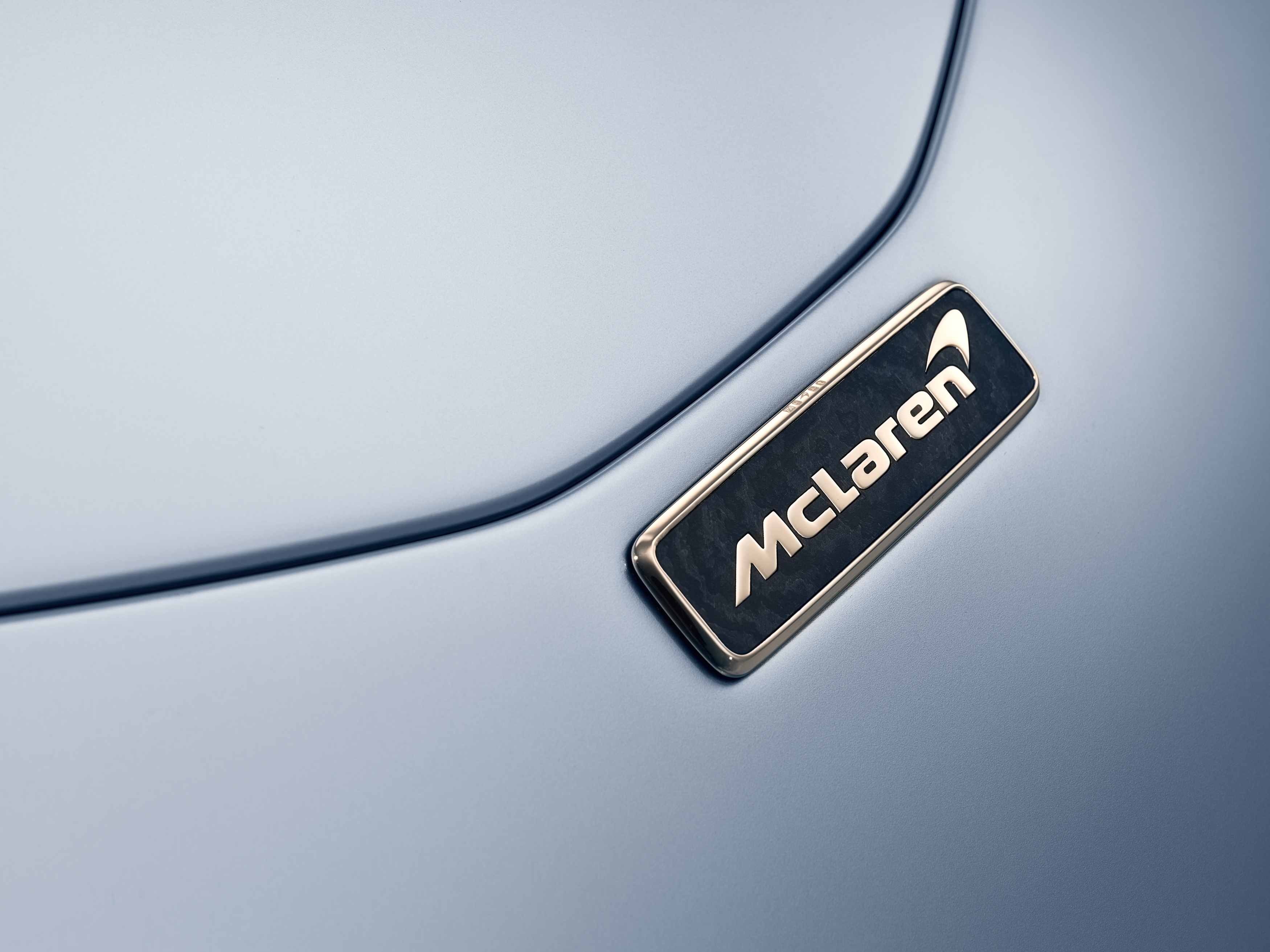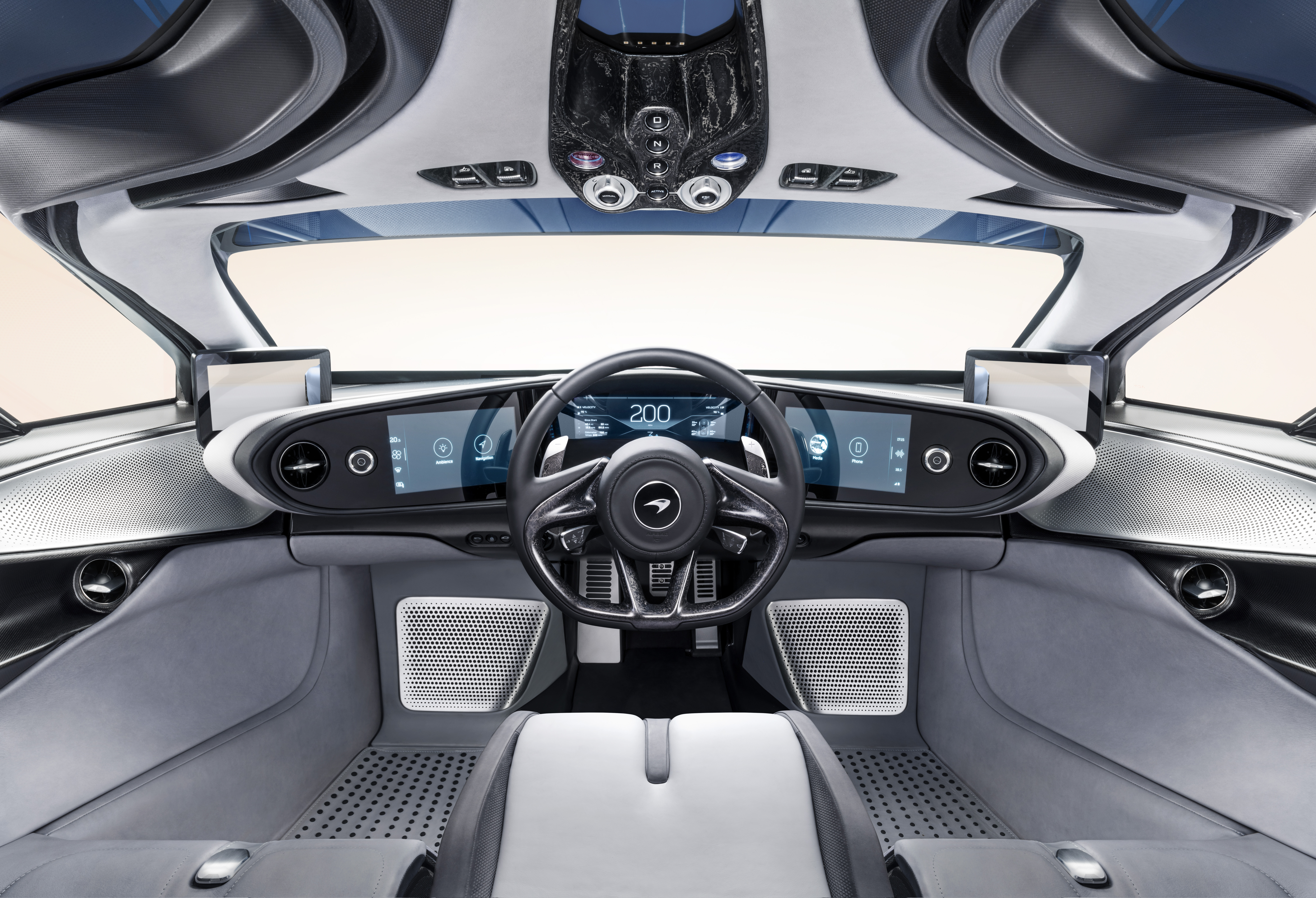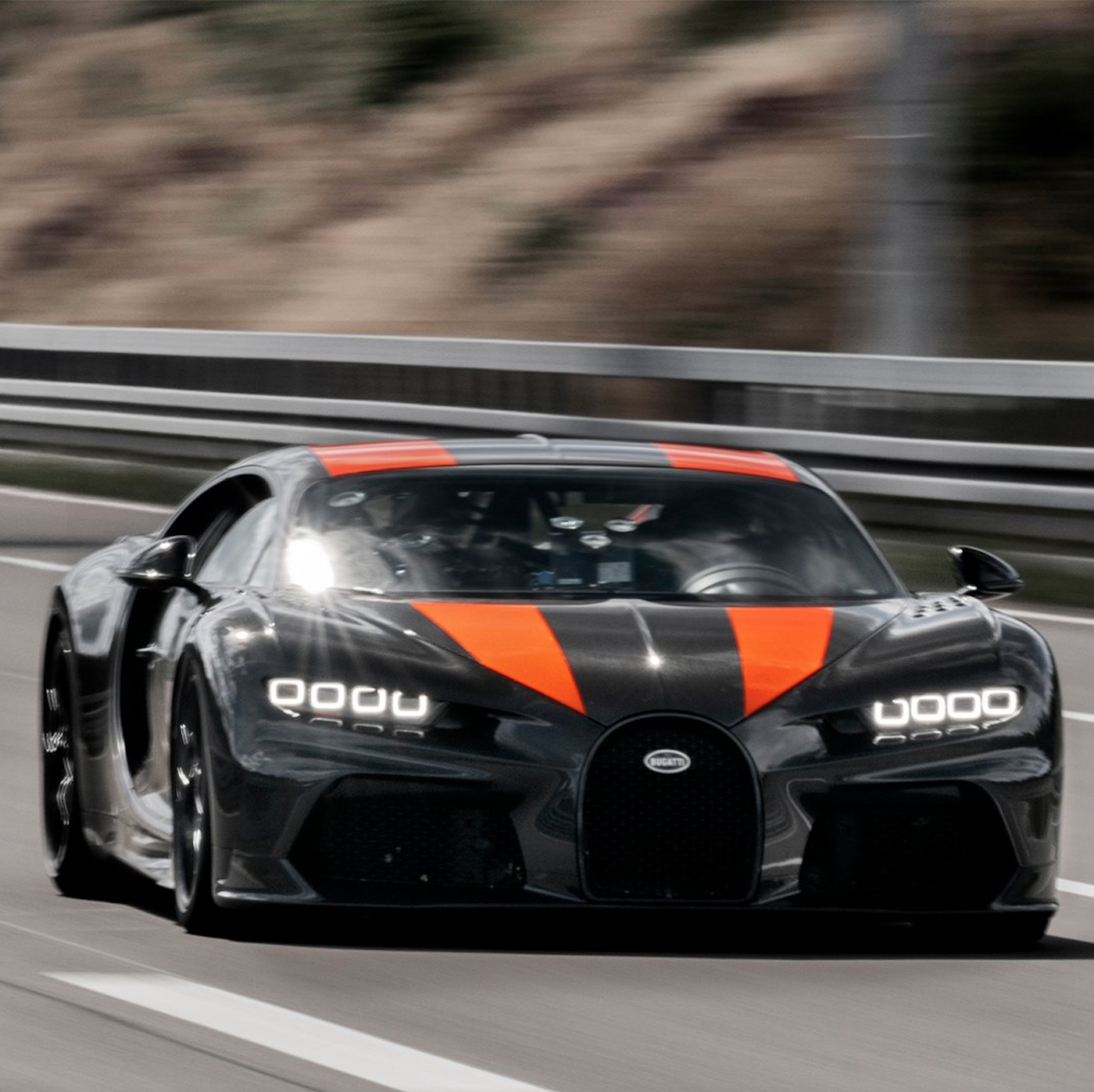McLaren Speedtail 2020: all the details confirmed for the F1 successor
Three-seater ‘hyper GT’ has a top speed of 250mph

















The McLaren Speedtail has finally been revealed in production form after years of teaser images and rumours.
The hypercar, formerly known as the BP23, is billed as the first true successor of the F1, which held the production car speed record of 240mph between 1998 and 2004.
Much like its F1 predecessor, the Speedtail incorporates a three-seater cabin, where the driver sits in the centre and is flanked by two passengers. The unconventional layout aims to give the driver a seating position akin to a single-seater racing car.
The Week
Escape your echo chamber. Get the facts behind the news, plus analysis from multiple perspectives.

Sign up for The Week's Free Newsletters
From our morning news briefing to a weekly Good News Newsletter, get the best of The Week delivered directly to your inbox.
From our morning news briefing to a weekly Good News Newsletter, get the best of The Week delivered directly to your inbox.
The British carmaker has also set its sights on exceeding the record-breaking top speed set by the F1 two decades ago.
The Week was given a sneak preview of the car’s final form at a private event earlier this month. Here’s what we learned:
Price and release

Only 106 examples of the Speedtail will be built, matching the F1’s production run.
A free daily email with the biggest news stories of the day – and the best features from TheWeek.com
Each version comes with a price tag of £1.75m before tax is applied, so buyers will probably pay north of £2m for one. There’s little chance you’ll get hold of a Speedtail, though, as all 106 examples have already sold out.
Those who managed to get hold of one before orders closed can expect deliveries to get underway in 2020.
Design

Aside from a few gaps between the panels on the design model that appeared at the private preview, McLaren vehcile line chief Andy Palmer confirmed to The Week that the Speedtail’s styling is true to the final version that is due to launch in 2020.
The Speedtail looks almost entirely different McLaren’s recent crop of supercars. Gone are the numerous aerodynamic ducts and channels found on the 720S and Senna, which are instead replaced by smooth panels and flat surfaces.
The front end is also significantly less aggressive than its siblings, with its ultra-thin headlights blending into the bodywork’s sleek surfaces.
There are some clear design elements that have been adopted from the company’s ultra-rare F1 GT from the late 1990s, such as the long tail and short overhangs ahead of the front wheels.
Arguably the most impressive feature, though, is the integration of the car’s electronically-controlled aerodynamics. While active aero devices on other cars are separate to the bodywork, the Speedtail’s wings join seamlessly with the hypercar’s surface.
When the wings raise, the carbon fibre bodywork bends as if it were made of fabric [pictured above]. It’s an elegant design that both helps the car generate downforce without compromising the Speedtail’s swooping styling.
Even the wing mirrors are integrated seamlessly. They take the form of two small cameras that sit on the vehicle’s wings and retract into the bodywork when the car is turned off.
Video footage recorded by the cameras is beamed into the cabin in real-time and can viewed on two monitors located on both sides of the cockpit.
Interior

The Speedtail’s three-seater cabin is remarkably similar to the F1, albeit far more luxurious than its 25-year-old predecessor.
Drivers sit in the centre of the Speedtail and are flanked by two passengers. Each seat is wrapped in premium leather, as are the dashboard and door sills, giving the cabin a more grand touring feel.
The cabin also gets a hi-tech feel, as drivers get a trio of digital displays to monitor the car’s speed and fiddle with the infotainment settings. Physical switches have been moved to above the driver’s head, which gives the cabin a minimalistic look.
What’s more, there’s more room in the Speedtail’s cabin than there was in the F1 thanks to the car’s new carbon fibre structure. Called monocage, the carbon safety cell has allowed McLaren’s designers to free up more space in the cabin without compromising on safety or structural rigidity.
Specs and performance

McLaren is keeping its lips sealed over what engine will power the Speedtail. Given that the company’s 4.0-litre twin-turbo V8 engine appears in its 720S supercar and Senna track car, there’s a good chance it will power the Speedtail as well.
While the British carmaker won’t reveal engine details until next year, the firm has revealed that the motor will be paired with a hybrid system to deliver a total output of 1035bhp, making it the most powerful McLaren production car to date.
This helps the Speedtail surge from 0-186mph in 12.8 seconds, while a 0-250mph run can be achieved in just 16.5 seconds.
The Speedtail’s top speed is 250mph, which makes it the fastest McLaren ever made. There’s a good chance the car can go even faster, but the company says compromises would have to be made to achieve a higher speed - potentially moving the car away from its grand touring design.
-
 The Week’s big New Year’s Day quiz 2026
The Week’s big New Year’s Day quiz 2026Quiz of the Year How much do you remember about 2025’s headlines? Put yourself to the test with our bumper quiz of the year
-
 Is tanking ruining sports?
Is tanking ruining sports?Today's Big Question The NBA and the NFL want teams to compete to win. What happens if they decide not to?
-
 ‘Netflix needs to not just swallow HBO but also emulate it’
‘Netflix needs to not just swallow HBO but also emulate it’instant opinion Opinion, comment and editorials of the day
-
 McLaren GT Ride-On: a cool new supercar for kids
McLaren GT Ride-On: a cool new supercar for kidsThe Week Recommends It’s the fourth model in McLaren’s children’s toy range
-
 McLaren’s 765LT is its spiciest model yet
McLaren’s 765LT is its spiciest model yetSpeed Read The 765LT is a real wild ride, but it’s not too hot to handle
-
 McLaren Senna Ride-On: the ultimate electric toy car of 2020
McLaren Senna Ride-On: the ultimate electric toy car of 2020Speed Read This supercar for kids is so cool that even F1 star Lando Norris jumped at the chance to take it for a spin
-
 Lamborghini ‘SVR’ 2020: track-only hypercar previewed in new trailer
Lamborghini ‘SVR’ 2020: track-only hypercar previewed in new trailerIn Depth Limited-edition model fuses hi-tech aerodynamics with the marque’s signature V12
-
 McLaren GT review: does the new supercar live up to its grand tourer name?
McLaren GT review: does the new supercar live up to its grand tourer name?The Week Recommends The Week Portfolio puts the British marque’s mid-engined model to the test
-
 Bugatti Chiron ‘Super Sport’: hardcore hypercar prototype cracks 300mph
Bugatti Chiron ‘Super Sport’: hardcore hypercar prototype cracks 300mphIn Depth Specially designed test model becomes the fastest ever production car
-
 Bugatti Centodieci: EB110 homage revealed after controversial leak
Bugatti Centodieci: EB110 homage revealed after controversial leakThe Week Recommends French firm’s limited-run hypercar labelled a “shit box” by Top Gear presenter
-
 Automobili Pininfarina Battista: the electric revolution finally arrives in Italy
Automobili Pininfarina Battista: the electric revolution finally arrives in ItalyIn Depth Legendary design house releases images of its production-spec 1,900bhp EV